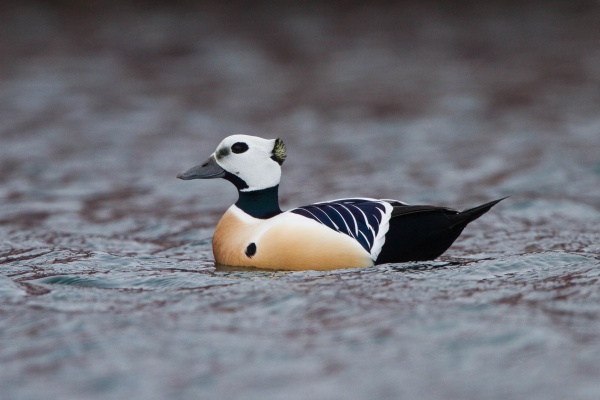Facts About Steller's eider
Steller's eider is a small, striking sea duck native to the Arctic coasts of eastern Siberia and Alaska. The male Steller's eider is particularly distinctive with its white head, black eye ring, greenish-black head tufts, and unique markings. In contrast, the female is smaller and resembles a more typical duck in appearance.
This species prefers to nest in tundra areas near the sea, typically laying between six to ten eggs. As winter arrives, Steller's eiders migrate to regions such as the Bering Sea, northern Scandinavia, and the Baltic Sea, where they often form large flocks. Their diet primarily consists of crustaceans and mollusks, with mussels being a particular favorite.
Interestingly, Steller's eiders have been known to hybridize with common eiders and possibly even with mallard ducks. Conservation efforts to protect this species are in place under the Agreement on the Conservation of African-Eurasian Migratory Waterbirds (AEWA), and an active recovery plan is implemented in Alaska.
The name "Steller's eider" has a fascinating origin. The genus name derives from Ancient Greek, meaning "much spotted" while the species is named in honor of the German naturalist Georg Steller.

 Russia
Russia